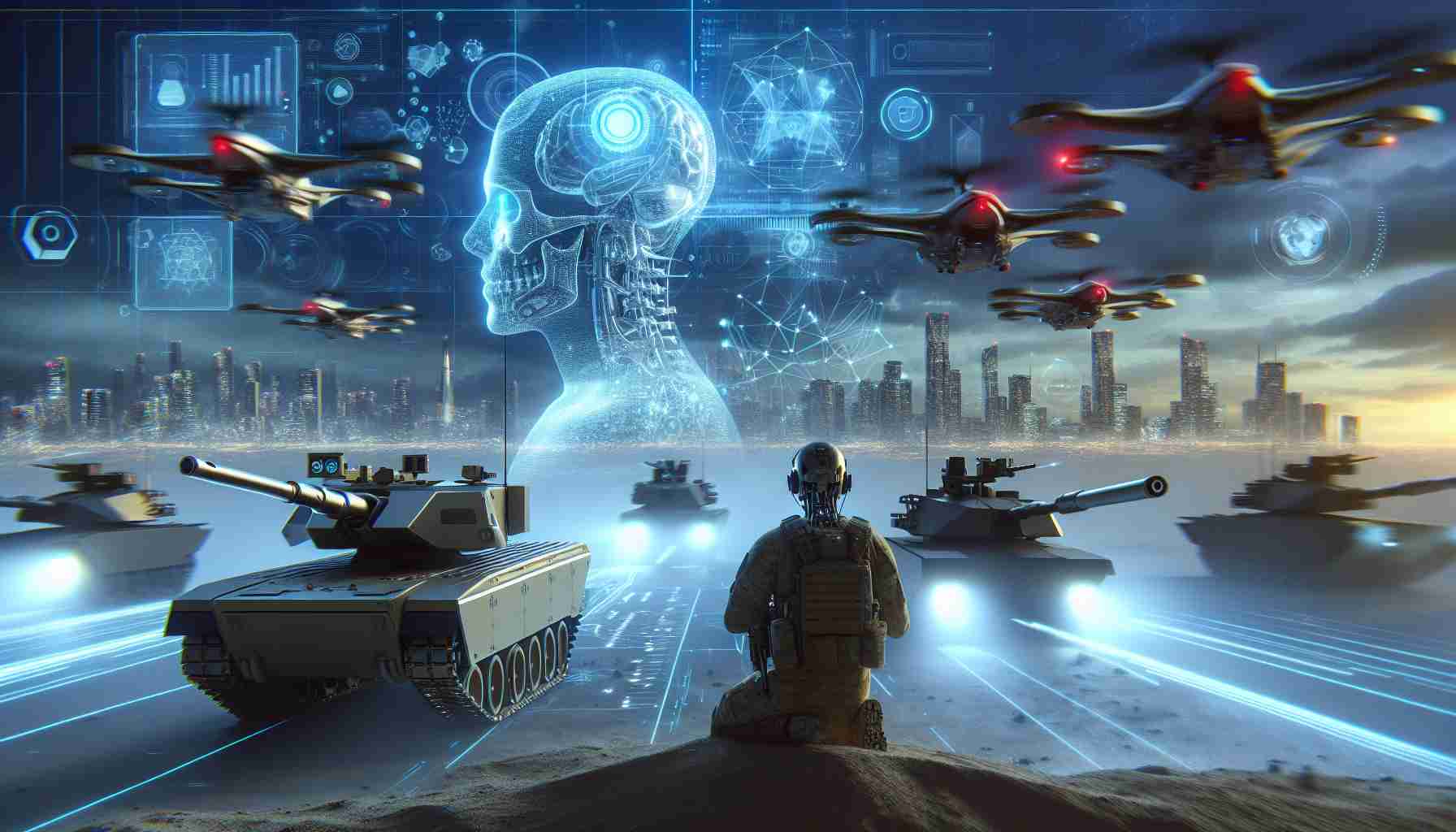Understanding the Rise of Autonomous Warfare
Artificial Intelligence (AI) is becoming an integral part of our lives, similar to mobile phones and the internet. However, as we delve deeper into its capabilities, we find ourselves grappling with the dual nature of this powerful technology—especially within military applications.
Autonomous weapon systems are at the forefront of this concern. These systems, enabled by advanced AI algorithms, can operate without direct human control, raising alarming questions about accountability and ethical warfare. For instance, drones like the ‘Saker Scout’ recently deployed in Ukraine are capable of autonomously identifying and targeting enemy positions with precision, illustrating both the technological advancements and the potential for unintended consequences.
Geopolitical tensions further complicate the landscape, as nations race to develop sophisticated military AI. This escalating arms race could deteriorate international stability, leading to scenarios where autonomous systems bear the responsibility of critical decisions in warfare. Currently, a number of countries are successfully deploying automated defense systems, capable of intercepting threats without human intervention, which could radically shift the dynamics of future conflicts.
Moreover, the integration of AI into nuclear strategies poses a profound existential risk. While Western nations assert a commitment to retaining human oversight, rivals may not adhere to the same standards, complicating global security.
Ultimately, the ongoing evolution of AI in warfare challenges us to reconsider the ethics and safety of these technologies. As we navigate this uncharted territory, a critical balance between innovation and responsibility must be struck.
The New Frontiers of Autonomous Warfare: Innovations and Implications
Understanding Autonomous Weapon Systems
The rise of Artificial Intelligence (AI) in warfare has brought about a significant shift in military strategies around the world. Autonomous weapon systems, equipped with sophisticated AI algorithms, can function independently, leading to intense debates about ethics and accountability in military engagements. This movement towards automation in warfare is not just a passing trend but a profound transformation with long-term implications.
Key Features of Autonomous Systems
1. Precision Targeting: Autonomous systems like drones are now capable of identifying and targeting threats with high accuracy. For example, advancements in AI vision technologies allow these machines to discern between combatants and civilians, yet the reliability of this technology remains a point of contention.
2. Real-Time Decision Making: AI-driven systems can analyze vast amounts of data in real-time, enabling rapid responses to threats. This capability is evident in systems employed for missile defense or air traffic control in military operations.
3. Networked Operations: Many modern military platforms utilize networked systems that allow multiple units to communicate and coordinate autonomously. This interconnected approach can enhance operational effectiveness, but it also raises concerns about cybersecurity vulnerabilities.
Pros and Cons of Autonomous Warfare
Pros:
– Reduced Risk to Personnel: Autonomous systems can be deployed in high-risk areas, minimizing human casualties.
– Increased Efficiency: AI can process information and make decisions quicker than human operators, potentially leading to faster mission outcomes.
– Operational Versatility: These systems can operate in environments that are too dangerous for human soldiers.
Cons:
– Ethical Dilemmas: The delegation of life-and-death decisions to machines is fraught with ethical concerns. The challenge of ensuring accountability in the event of a mistake is paramount.
– Security Risks: Autonomous systems can be susceptible to hacking or misuse, which could have catastrophic outcomes.
– Escalation of Conflict: The ease of deploying automated systems might lower the threshold for engaging in conflict, leading to more frequent military actions.
Use Cases of Autonomous Weapons
Countries are actively developing and deploying autonomous weapon systems for various applications:
– Swarm Drones: Used for reconnaissance and attack missions while being controlled through a centralized AI system.
– Automated Defense Systems: Such as the Israeli Iron Dome, which intercepts incoming missiles autonomously.
– Robotic Ground Vehicles: Employed for logistics, surveillance, and even direct engagement in combat situations.
Limitations and Future Trends
While autonomous warfare technology is advancing rapidly, several limitations still exist:
– Reliability: AI systems can make errors, especially in ambiguous scenarios where human intuition is invaluable.
– Regulatory Frameworks: There is a lack of international regulations governing the use of autonomous weapons, leading to potential arms races.
Looking towards the future, we can expect:
– Increased Regulation: As the implications of autonomous warfare become clearer, there will likely be calls for international treaties to govern their use.
– Continued Innovation: The race for military supremacy will fuel ongoing advancements in AI technology, potentially leading to even more capable systems.
Security Aspects and Global Implications
The integration of AI into military operations is closely linked to national security. Countries may prioritize the development of autonomous weapons to maintain strategic advantages, impacting global power dynamics. As states deploy these technologies, the potential for misunderstandings and unintentional escalations increases, making it imperative for governments to engage in diplomatic dialogues aimed at establishing common safety standards.
Conclusion
The evolution of autonomous warfare represents both a technological revolution and a moral conundrum. As nations navigate the balance between embracing these innovations and addressing the open-ended questions about ethics and accountability, the future of warfare may be reshaped in ways we cannot yet fully understand. Engaging in ongoing discussions about the implications and regulations of autonomous systems will be crucial for securing a stable and ethical approach to military advancements.
For more insights on the future of warfare technologies, visit Futurism.
